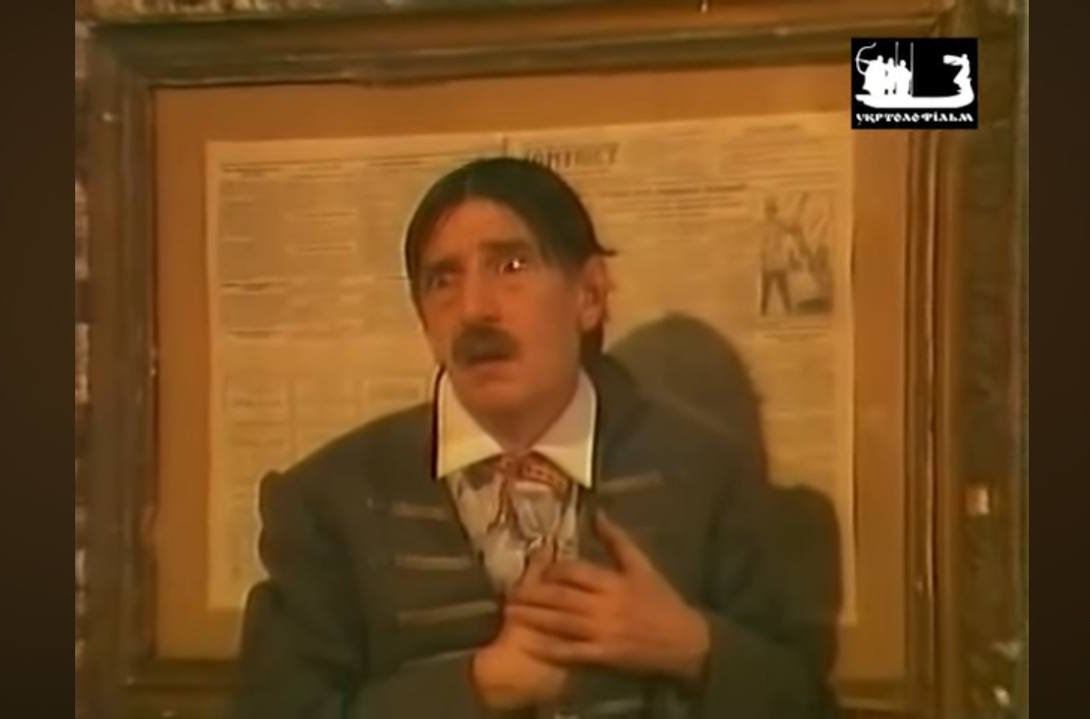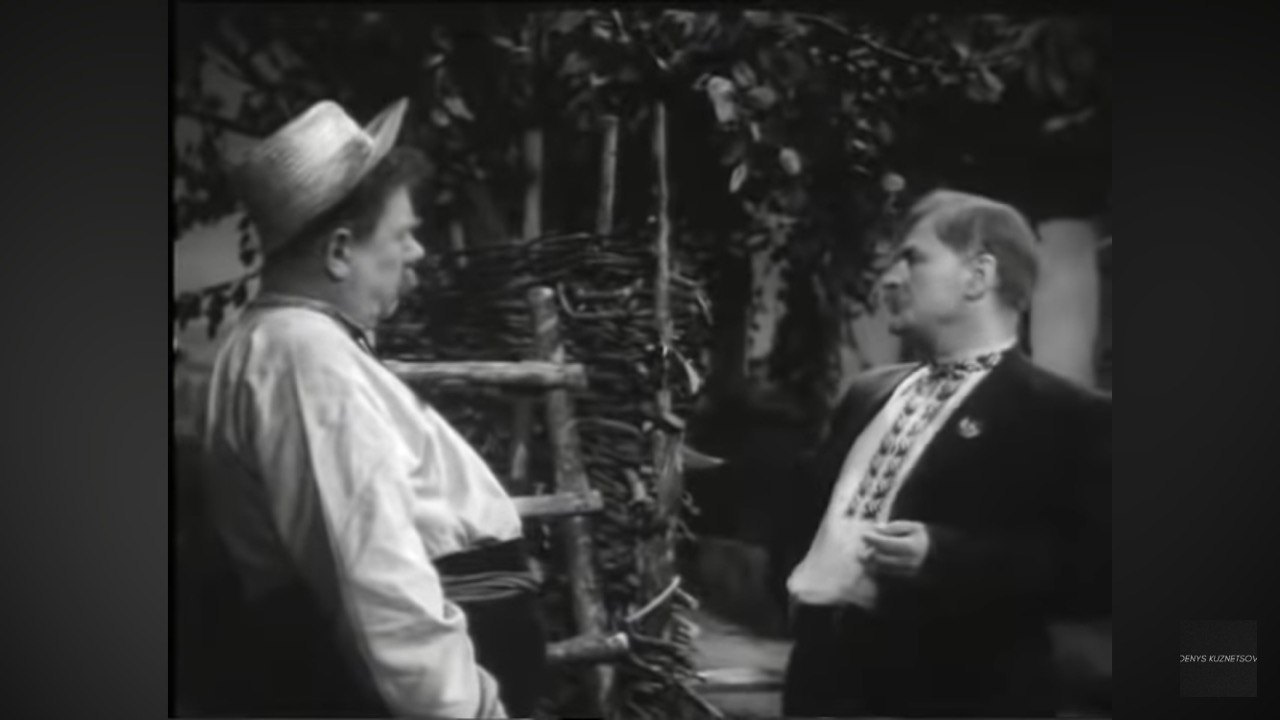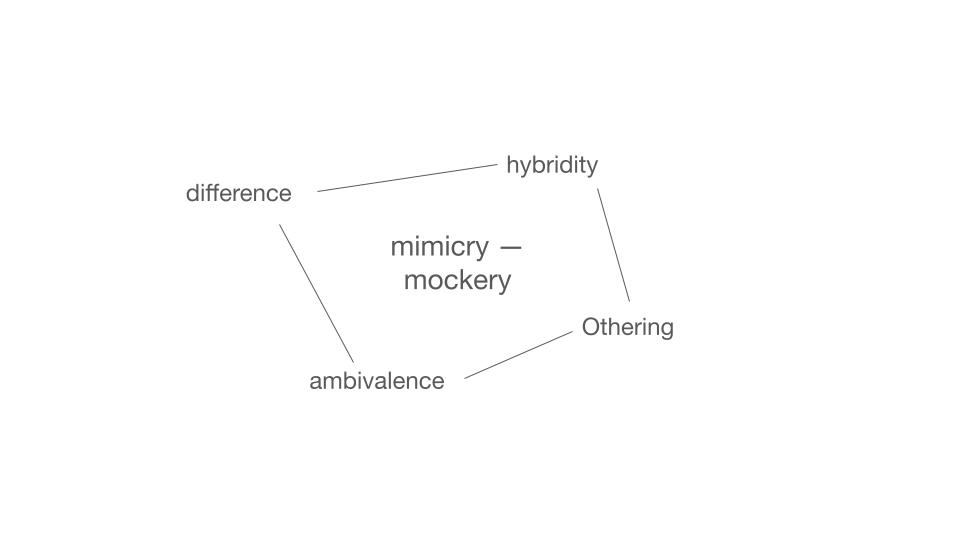Mimicry
SONIAKH presents an excerpt from Ukrainian Decolonialy Glossary, a collection of concepts from de-, anti- and post-colonial theories, featuring examples specific to the Ukrainian context.
Following the full-scale invasion, the themes of coloniality and decolonization began to gain popularity beyond academic circles as never before. At the same time, the question was raised of the importance of using these methodologies critically rather than borrowing or copying them. With this project, the curatorial team, consisting of Yuliia Elyas, Iva Naidenko, Anastasiia Omelianiuk and Nadiia Koval, aims to contribute to the dissemination and critical use of tools related to post- and decolonial concepts in Ukrainian contexts. This will not only deepen the understanding of the Ukrainian past, but also actively engage in the global intellectual struggle against colonial epistemologies.
Below is one of the articles presented in the Ukrainian Decolonial Glossary — the mimicry, written for the project by SONIAKH’s co-curator Valeriia Buradzhyieva.

According to the concept of the Indian researcher of postcoloniality Homi K. Bhabha, mimicry (from the ancient Greek mimeisthai — “to imitate”) is a process of adapting and imitating the culture of the coloniser by the colonised. It is by definition an ambivalent and unintentionally subversive process, since imitating is never ideal and is always characterized by deviant difference (here Bhabha borrows a concept from Jacques Lacan’s structural psychoanalysis). The phenomenon in question covers two processes marked by the word mimicry: merging with the environment in order to survive, and imitation in order to ridicule. Mimicry difference is most clearly manifested in the linguistic phenomenon of pidgins (in the context of Ukrainian (post)coloniality — in surzhyk [the Ukrainian-Russian pidgin used in certain regions of Ukraine. Trans.]), which, with its mocking undertones (mimicry bordering on mockery), enables speakers to unknowingly expose colonial power, thereby forming a hybrid identity.
The coloniser also experiences ambivalence in mimicry: on the one hand, in order to maintain his power, the coloniser resorts to consistent assimilation of the colonised; on the other hand, if the colonised develop too strong a resemblance to the coloniser, they can claim power opportunities or fight for his sovereignty. In order to prevent the latter, the coloniser resorts to Othering of the colonised, and presents the colonised culture as fundamentally different from his own. At the same time, Othering often primitivises, exoticises, romanticises (for example, the image of a noble savage), and represents the culture in parodic and other ways.
Bhabha, relying on John Langshaw Austin’s philosophy of language, substantiates the performative nature of mimicry. A mimetic performance is performed by the colonised subject in front of the coloniser in order to “be recognised as an imperial Other, but at the same time this performance embodies difference, because [the colonised] is almost identical to the imperial figure, but not entirely so” [1] (here Bhabha employs wordplay: “the same but not white” / “the same but not quite”). These considerations reveal another aspect of hybridity: while the colonised resort to imitation for survival, they also possess an ambivalent ability to derive pleasure from mimicry, longing to be acknowledged, accepted, and perceived as “the same”.
Performance studies offer a rich vocabulary that serves as a methodological foundation for analysing mimicry in both postcolonial theory and performative arts. The theatricality of mimicry has been investigated by literary critic Tamara Hundorova, among other scholars. She characterises coloniality as a performance, a travesty, “a process of disguise carried out by directive from the centre” [2]. Applying such postcolonial performance perspectives, the researcher shows how Ivan Kotlyarevsky’s Eneida portrays and exposes the “little Russian masquerade” [3] [in Russian colonial discourse Ukrainians are often referred to as “little Russians”. Trans.].
Perhaps the most interesting object for analysis through the prism of mimicry performance in 20th century Ukrainian drama is Mykola Kulish’s satirical comedy Myna Mazaylo (1928). Its plot is centered around the main character — Kharkiv official Myna who is desperately trying to officially russify his Ukrainian surname Mazaylo and get rid of the Ukrainian accent in his Russian pronunciation. He enjoys the lessons he takes from the expert in Russian orthoepy Baronova-Kosino, and at the same time cannot eliminate his own mimicry difference:
“Baronova-Kosino:
– Pronounciation! Pronunciation! Not “nad luhamy” [Ukr.: nad luhamy — over the meadows. Trans.], but “nad lugamy” Not “ha”, but “ga”…
Mazaylo:
— “Nad luhamy”…
— “Nad lugamy”!
— “Nad luhamy”!
— Ga!
— Ha!” [4]
Mazaylo’s opportunistic mimicry is stopped by the Soviet government itself, which not only forbids him to change his surname to Mazenin, but also dismisses him from his position for resisting the newly introduced Ukrainianisation policy. After getting rid of his previous identity, Mazaylo fails to adapt a new one, finding himself trapped in the space of a hybrid liminoid — an uncertain “place in the middle” in which the mimicry strategy breaks down against the system of othering. The ending of Myna Mazaylo seems to parody the classical unconvincing finale with the punitive intervention of the authorities: Kulish, while technically remaining within the limits of censorship, subverts it. So the play, which could have been written and staged only during the period of Ukrainisation, secretly criticizes the ambivalence of the policy itself. The further fate of Myna Mazaylo seems to continue its own plot: after the termination of the Ukrainianisation policy, the play was banned, and Kulish himself was repressed and executed in Sandarmokh in 1937, together with other representatives of Ukraine’s Executed Renaissance.

Oleksandr Korniychuk created the play In the Steppes of Ukraine three years after the execution of these Ukrainian artists in Sandarmokh. If Myna Mazaylo is saturated with the exposure of postcolonial artistic statements, In the Steppes of Ukraine is a purely colonial work — a typical example of communist moralite of the Stalin era. As an example of a kolhosp comedy [Ukr.: kolhosp is a collective farm. Trans.], it others Ukraine with the depiction of sharovarshchyna [sharovarshchyna is a culturological term, usually negative, for the ethnic stereotype of Ukrainian culture through pseudo-folk, kitsch elements of costume and life. Trans.] in the stereotypical setting (the events take place in an idyllic Ukrainian village), the primitive traditional costumes, the pejorative names of the main characters Halushka [halushky is a Ukrainian word for a traditional thick soft noodles. Trans.] and Chasnyk [chasnyk is a Ukrainian word for garlic. Trans.], and even the make-up. In the film adaptation directed by Hnat Yura (1952), the actors wear exaggerated fake noses — a common trope in Soviet cinema of the 1940s and 1950s, and used to depict characteristic features in the appearance of Ukrainian peasants. Nevertheless, In the Steppes of Ukraine is still interesting to us, because even when writing a conjunctural work commissioned by Stalin, the Ukrainian Korniychuk still allows mimicry mistakes. Although not as explicitly as Myna Mazaylo, the play is also linguistically coded: its comedy often causes a discrepancy between the situation and the language, the rural context and Soviet bureaucracies, in which the mimicry gap is visible. When the wife of the main character Halushka (the head of the “Death to Capitalism” collective farm) recites a prayer, he declares that God is no longer an authority. To her question, who is now in place of God, Halushka answers: “Dunno, there were no instructions on this” [5].
Finally, contemplating the potential future of the play In the Steppes of Ukraine, researcher Tetyana Sverbilova suggests the possibility of its new iteration through genre transformation “from farce to “historical tragi-grotesque”” [6]. And indeed, we have grounds to assert that the intervention in the plot of the play still falls short in terms of its potential for decolonial transformation, compared to dramaturgical and stylistic work with hybrid mistakes capable of turning the play into a kind of decolonial mimicry caricature.

For further reference
Homi Bhabha, Of Mimicry and Man: The Ambivalence of Colonial Discourse (Cambridge, MA: The MIT Press, 1984), 116.
Mayhill Fowler, What Was Soviet and Ukrainian About Soviet Ukrainian Culture? Mykola Kulish’s Myna Mazailo on the Soviet Stage (Nationalities Papers 47, 2019), 355–365.
Translation from Ukrainian: Galyna Kotliuk
Editor: Clemens Poole
Valeriia Buradzhyieva A curator from Berdiansk, Ukraine. She holds a BA degree in Cultural Studies from the Taras Shevchenko National University of Kyiv. She is currently pursuing a Master’s degree in Performance Studies at Stockholm University. Her main interests are dramaturgy of contemporary dance and relational aesthetics. Since 2022, Valeriia has been a co-curator of the online platform SONIAKH. She has worked for IZOLYATSIA Foundation (Kyiv, Ukraine), Wild Theatre (Kyiv, Ukraine) and Milvus Artistic Research Center (Knislinge, Sweden).
Published 19 May 2024
- Тамара Гундорова, Колоніяльність як перевдягання: «Малоросійський маскарад» Івана Котляревського (Cambridge, MA: Harvard Ukrainian Studies 32, no. 1–4, 2010-2011), 10.
2. Ibid., 7.
3. Ibid.
4. Микола Куліш, Мина Мазайло. Вибрані твори: збірка (Харків: Книжковий Клуб «Клуб Сімейного Дозвілля», 2020).
5. Олександр Корнійчук, В степах України / Драматичні твори. Вступ. ст., упоряд. і приміт. Д. Т. Вакуленко. Ред. І.О. Дзеверін (Київ: Наукова думка, 1989).
6. Тетяна Свербілова, Людмила Скорина, Українська драма 30-х рр. як модель масової культури та історія драматургії у постатях (Черкаси, 2007), 182 с.
